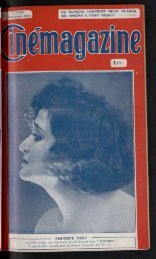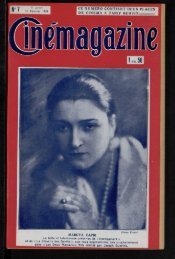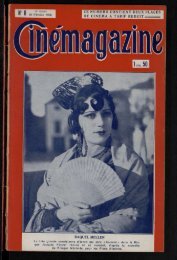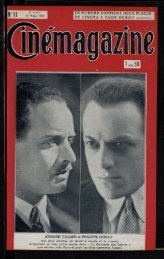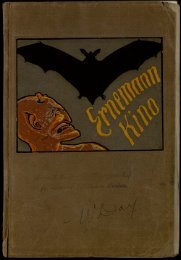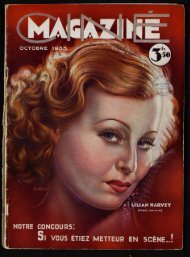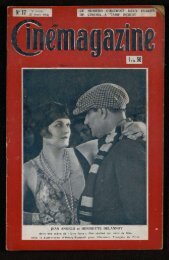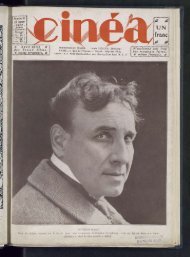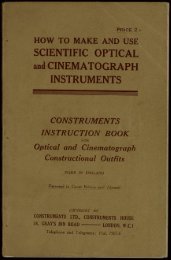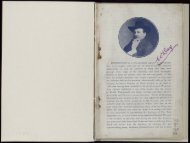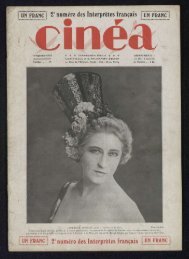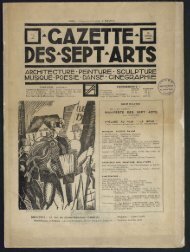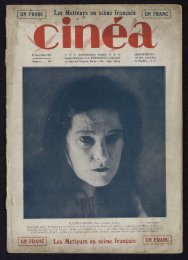Untitled
Untitled
Untitled
You also want an ePaper? Increase the reach of your titles
YUMPU automatically turns print PDFs into web optimized ePapers that Google loves.
10 MODERN MAGIC LANTERNS.<br />
The best petroleum is cheap, and such lamps are the most<br />
economical in use ; a three-wick lamp does not consume so<br />
much oil as a four-wick for the same amount of light, but<br />
the difference is immaterial.<br />
It is almost unnecessary to add that the glass at one end<br />
of the combustion chamber and the mirror at the other<br />
must be kept clean and bright, or much light will be lost.<br />
The mirror is generally hinged at the top, as shown in Fig. 5,<br />
and can be raised to inspect the lamp ; it is also often<br />
provided with a coloured glass window, but this, from its<br />
small size, we have not found to be of much use.<br />
The method of adjusting the position of the lamp in the<br />
lantern is usually the same as that of the jet tray for limelight,<br />
and will be dealt with under that heading. In the<br />
better form of lantern, the lamp slides into the body in<br />
grooves, which will also carry a jet, if at any time it is<br />
desired to substitute the limelight for the oil lamp.<br />
Owing to the great heat which oil lamps emit, it is<br />
necessary for the lantern body to be jacketted ; that is to<br />
say, for the body to consist of two distinct shells, between<br />
which is an air space. Even with this precaution the outer<br />
casing, which is sometimes of wood, but more often of<br />
Russian iron, is almost sure to get very hotfar hotter, in<br />
fact, than should be the case with the limelight or with an<br />
arc lamp, but this is unavoidable.<br />
CHAPTER III.<br />
the limelight.<br />
THE most popular of all lights for lantern purposes is one<br />
or other form of what is known as the limelight. This<br />
means of illumination was invented by Lieutenant Drummond<br />
in 1826, and although it has been employed more or less<br />
ever since, it has received its greatest impetus by the sale at<br />
a moderate price of oxygen gas compressed into steel<br />
cylinders, which are fairly portable.<br />
The use of Limelight as an illuminant, as its name<br />
implies, is based on the fact that, by directing a very<br />
hot flame against a piece of lime, the latter soon becomes<br />
white hot, and emits a very brilliant light of great penetrative<br />
power. To achieve this, the flame must be of the<br />
most intense character ; ordinary house gas, spirit or<br />
petroleum lamps are quite useless for heating the lime,<br />
and recourse has to be had to flames in which oxygen gas,<br />
freed from the nitrogen, argon, or whatever other diluent<br />
chemists may eventually decide to be present,- is employed.<br />
By the aid of this oxygen the combustion of most inflammable<br />
substances is rendered much more vigorous<br />
and complete, and the heat emitted more concentrated and<br />
intense.<br />
The instrument by which the flame is obtained and<br />
directed against the lime is known as a jet, and some idea<br />
of its appearance may be gathered from Figs. 7, 8, and 9,<br />
which represent the three types of jet in common use, the<br />
oxy-calcium, the blow-through, and the mixed jets. Most



